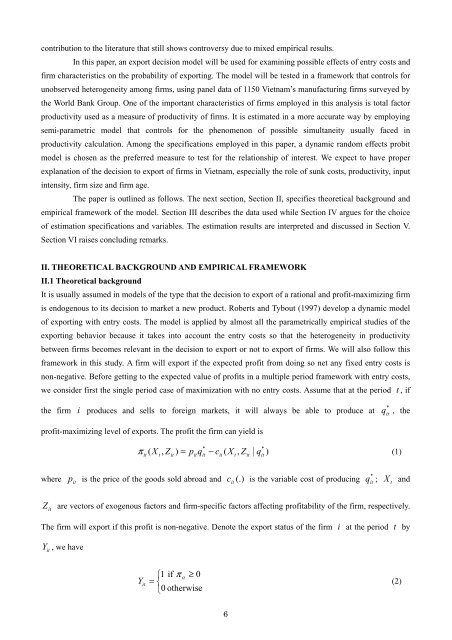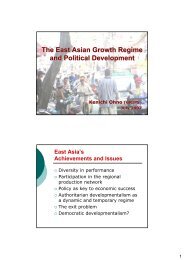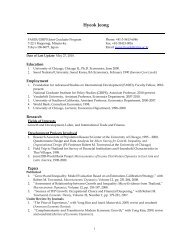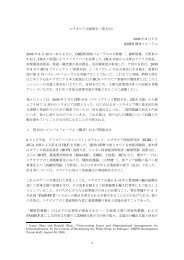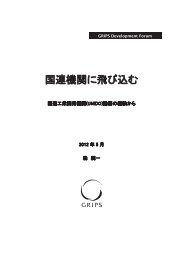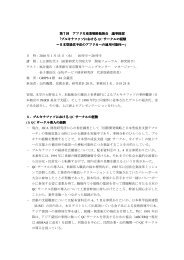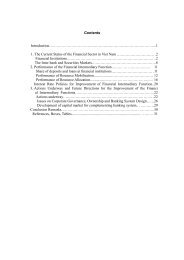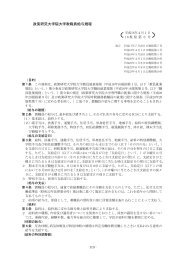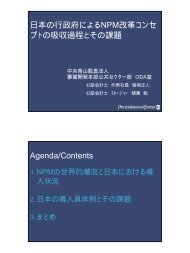Evidence from Firm-level Data in Vietnam
Evidence from Firm-level Data in Vietnam
Evidence from Firm-level Data in Vietnam
You also want an ePaper? Increase the reach of your titles
YUMPU automatically turns print PDFs into web optimized ePapers that Google loves.
contribution to the literature that still shows controversy due to mixed empirical results.In this paper, an export decision model will be used for exam<strong>in</strong><strong>in</strong>g possible effects of entry costs andfirm characteristics on the probability of export<strong>in</strong>g. The model will be tested <strong>in</strong> a framework that controls forunobserved heterogeneity among firms, us<strong>in</strong>g panel data of 1150 <strong>Vietnam</strong>’s manufactur<strong>in</strong>g firms surveyed bythe World Bank Group. One of the important characteristics of firms employed <strong>in</strong> this analysis is total factorproductivity used as a measure of productivity of firms. It is estimated <strong>in</strong> a more accurate way by employ<strong>in</strong>gsemi-parametric model that controls for the phenomenon of possible simultaneity usually faced <strong>in</strong>productivity calculation. Among the specifications employed <strong>in</strong> this paper, a dynamic random effects probitmodel is chosen as the preferred measure to test for the relationship of <strong>in</strong>terest. We expect to have properexplanation of the decision to export of firms <strong>in</strong> <strong>Vietnam</strong>, especially the role of sunk costs, productivity, <strong>in</strong>put<strong>in</strong>tensity, firm size and firm age.The paper is outl<strong>in</strong>ed as follows. The next section, Section II, specifies theoretical background andempirical framework of the model. Section III describes the data used while Section IV argues for the choiceof estimation specifications and variables. The estimation results are <strong>in</strong>terpreted and discussed <strong>in</strong> Section V.Section VI raises conclud<strong>in</strong>g remarks.II. THEORETICAL BACKGROUND AND EMPIRICAL FRAMEWORKII.1 Theoretical backgroundIt is usually assumed <strong>in</strong> models of the type that the decision to export of a rational and profit-maximiz<strong>in</strong>g firmis endogenous to its decision to market a new product. Roberts and Tybout (1997) develop a dynamic modelof export<strong>in</strong>g with entry costs. The model is applied by almost all the parametrically empirical studies of theexport<strong>in</strong>g behavior because it takes <strong>in</strong>to account the entry costs so that the heterogeneity <strong>in</strong> productivitybetween firms becomes relevant <strong>in</strong> the decision to export or not to export of firms. We will also follow thisframework <strong>in</strong> this study. A firm will export if the expected profit <strong>from</strong> do<strong>in</strong>g so net any fixed entry costs isnon-negative. Before gett<strong>in</strong>g to the expected value of profits <strong>in</strong> a multiple period framework with entry costs,we consider first the s<strong>in</strong>gle period case of maximization with no entry costs. Assume that at the period t , ifthe firm i produces and sells to foreign markets, it will always be able to produce at*q it, theprofit-maximiz<strong>in</strong>g <strong>level</strong> of exports. The profit the firm can yield isπ ( Xitt, Zit) =pitq*it− c ( Xitt, Zit| q*it)(1)*where p is the price of the goods sold abroad and (.) is the variable cost of produc<strong>in</strong>g q ; X anditc itittZitare vectors of exogenous factors and firm-specific factors affect<strong>in</strong>g profitability of the firm, respectively.The firm will export if this profit is non-negative. Denote the export status of the firm i at the period t byYit, we haveYit⎧1 if πit≥ 0= ⎨⎩0 otherwise(2)6


